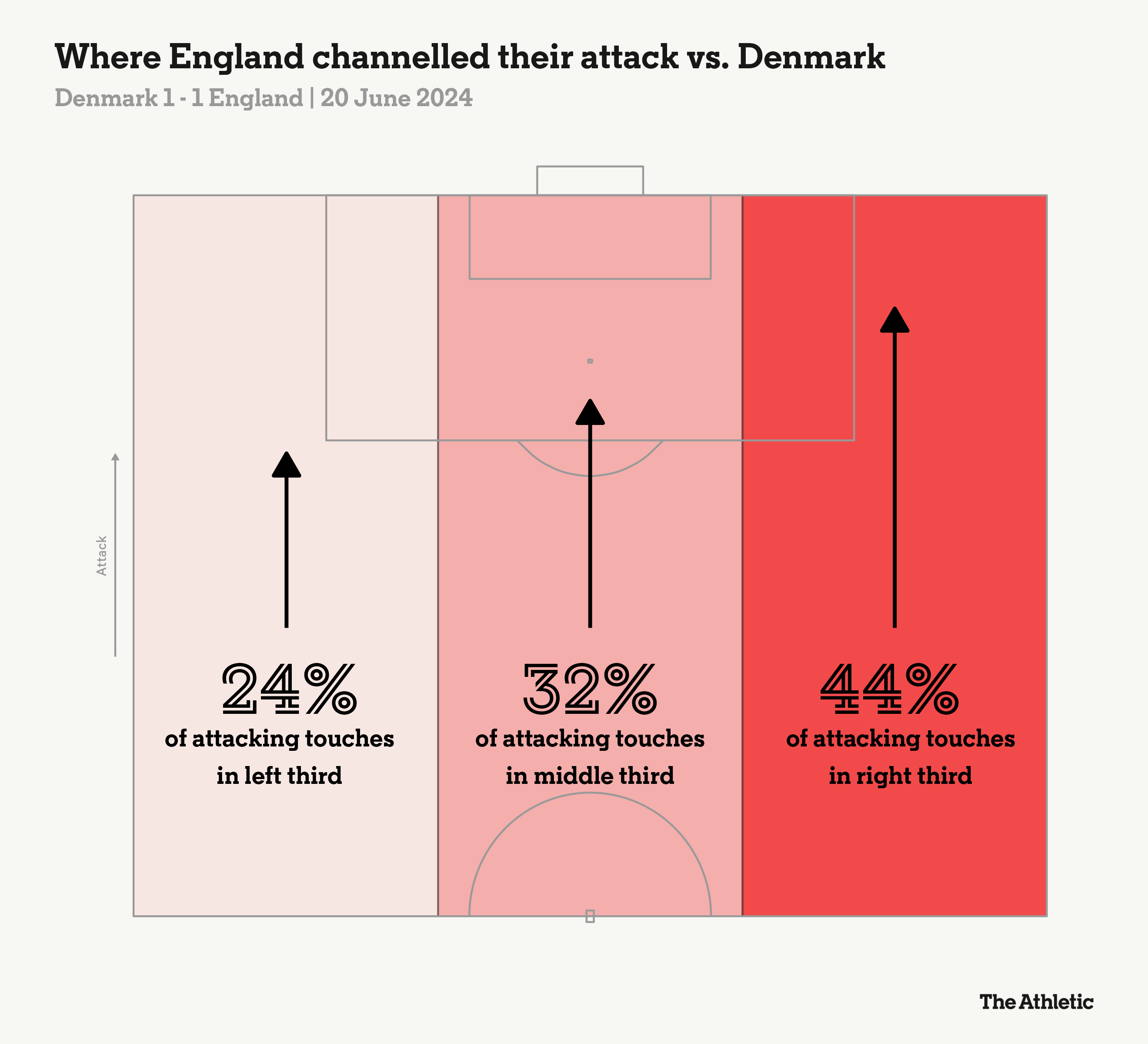It was a familiar story for Gareth Southgate’s England in their second match at Euro 2024, as they took the lead against Denmark before falling deep and allowing their opponents back into the game .
England started brightly and took the lead in the 18th minute through captain Harry Kane, but failed to produce much thereafter. Denmark’s influence continued to grow and they scored a deserved equalizer through Morten Hjulmand after 34 minutes.
The result means England top Group C with four points, heading into the final round and will face Slovenia on June 25. Denmark are second in the group with two points and will face Serbia in their final match.
Jack Pitt-Brooke, Mark Carey, Dan Sheldon and James McNicholas analyze the main talking points from the Frankfurt match…
England give up after taking the lead – again
In England’s two matches at Euro 2024, they have taken an early lead. Normally, a goal in the first 20 minutes should calm the nerves and provide a platform to build on for the rest of the match.
Instead, England responded to these early goals with lethargic passing, conservative positioning and a complete abolition of attacking movements.
For the remainder of the first half, England appeared to have problems throughout their spine. In midfield, Declan Rice and Trent Alexander-Arnold were trapped on the edge of their penalty area. In front, Jude Bellingham and Harry Kane seemed to want to occupy all the same spaces. England looked in tatters and out of ideas.
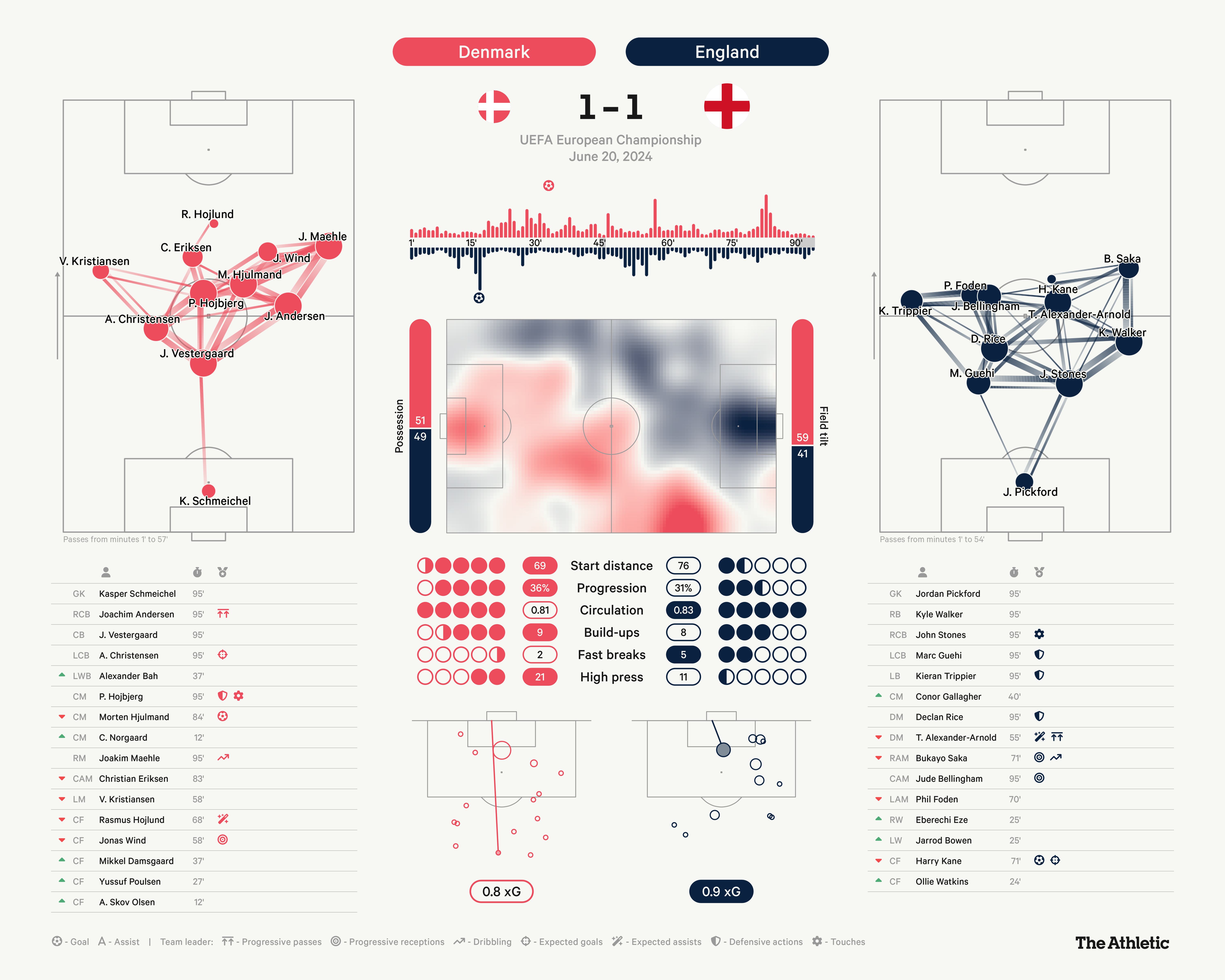
A persistent criticism of Gareth Southgate concerns England’s inability to control matches. Their continued failure to take the initiative – even when they are ahead – will only lead to greater scrutiny.
James McNicholas
Kane scores… but barely
Despite the opening goal, it was not a classic Harry Kane performance.
He started the game in the best possible way, heading home Walker’s cross to put England 1-0 ahead in the 18th minute. It was an important goal for the man who has made a habit of starting slowly in the last two tournaments before finding his best form in the knockout stages. It was his first goal in the group stage since his hat-trick against Panama in Nizhny Novgorod almost six years ago.
But just as Kane was criticized for not doing enough in the build-up against Serbia, today he was criticized for not doing enough as a conventional number 9. He didn’t press, didn’t run behind and never looked 100 percent. hundred.
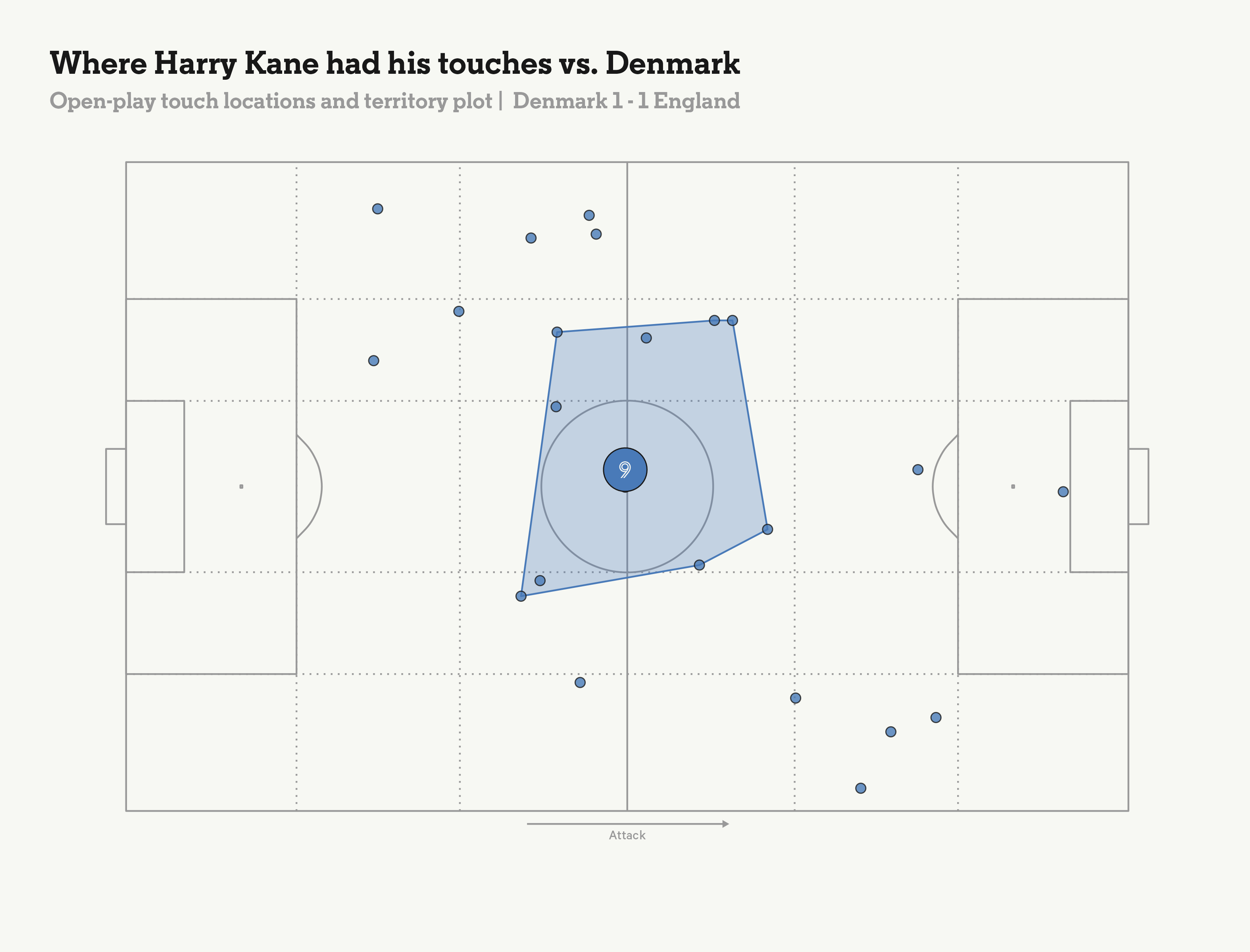
Even then it was still a surprise when he was substituted with over 20 minutes remaining for Ollie Watkins. Kane was suffering from a back injury at the end of the season with Bayern Munich, and Southgate has previously been keen to protect him at tournaments, so he doesn’t always play 90 minutes.
But it certainly raises questions ahead of the Slovenia game, just as it did in the group stages before.
Jack Pitt-Brooke
Hjulmand’s miraculous strike surprises England
Morten Hjulmand’s equalizer was struck from 30.9 meters, making it the longest Euro goal since Mikkel Damsgaard’s strike for Denmark against England in 2021. As sloppy as it was England in the build-up, it was an exceptional strike.

(Franco Arland/Getty Images)
The 24-year-old Sporting Lisbon midfielder has been linked with a move to Tottenham – but Spurs’ interest could hit a snag.
“My father supported us and we watched matches together when we were younger,” Hjulmand told Sporting’s in-house TV channel. “When I started watching football, Arsenal had a fantastic team and Patrick Vieira was the captain and played in midfield. He was and is a big inspiration to me.
It’s more than just an accessory: Hjulmand has the special crest commemorating the 125th anniversary of the formation of Arsenal tattooed on his left arm.
James McNicholas
Have Southgate’s replacements had an impact?
Gareth Southgate made a triple substitution with just over 20 minutes remaining, bringing on Eberechi Eze for Bukayo Saka, Jarrod Bowen for Phil Foden and Ollie Watkins for Harry Kane.
Bowen went wide on the right, Eze slotted in on the left and Watkins played through the middle.
Watkins got off to a fast start, forcing Danish goalkeeper Kasper Schmeichel to deflect his shot for a corner after Jude Bellingham’s defensive pass released the Aston Villa striker.
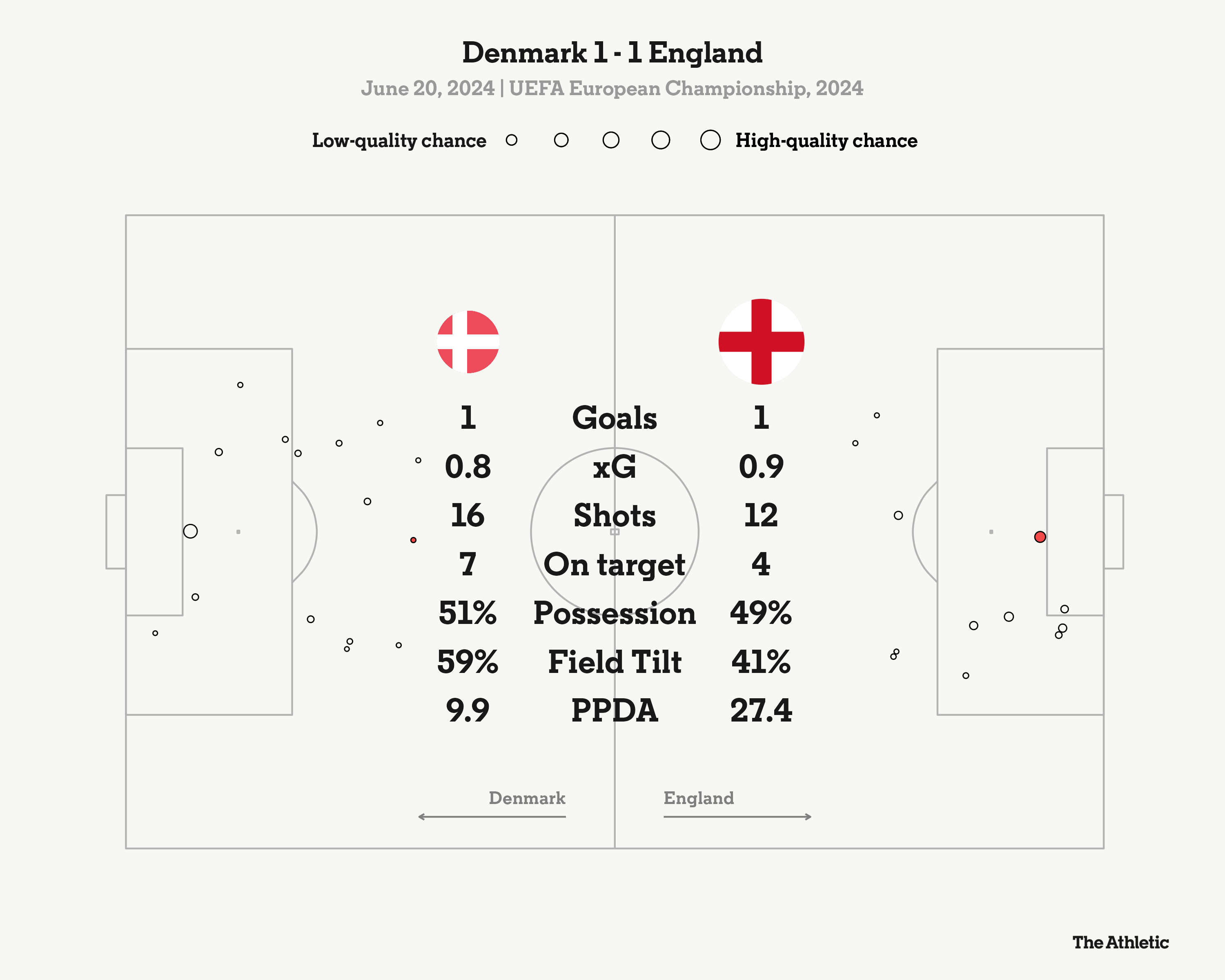
The trio’s pace and direct style of play gave Denmark further food for thought and, at times, they threatened to fall behind and stretch their opponents, only for a foul or misplaced pass to halt their progress .
But the main problem for Southgate’s men, especially in the last exchanges, is that they did not see the ball enough. Denmark were much more comfortable in possession and at no point did they seem troubled.
Conor Gallagher replaced Trent Alexander-Arnold in the 54th minute and was quickly booked for a foul on Joakim Maehle. As always with the Chelsea midfield, there was no shortage of energy, but this change did not help England regain control of the midfield and Denmark created chances in the final minutes .
And Sheldon
England’s unbalanced attack
The positive on the English right flank is that they look dangerous in many of their worked attacking sequences on that side of the pitch.
Against Serbia, it was Bukayo Saka’s cross that led to Jude Bellingham’s headed goal, while Kyle Walker’s pace and overlapping runs were crucial to England’s opener against Denmark. There is the right balance on this side of the pitch, and Saka in particular seems to be off to a good start to the tournament in his first two matches.
England identified a weakness in the left side of the Danish defense and channeled much of their attack towards that side, with 44% of their attacking touches coming from the right flank. In the two matches, 12 crosses were made to the right, with only four coming from the left. Unfortunately, this bias towards attacking England reflects a negative view of the procedure – which is largely driven by necessity.
It’s been well documented, but playing a right-footed Kieran Trippier at left-back won’t offer the same layered threat – or pace in wide areas – and Phil Foden in front of him is much more of a ball to play. -footed player who likes to drift inside and pick up pockets of space in tight spaces. When opponents know this is the case, they can adapt their own attacking game plan accordingly as England become predictable going forward.
The optimistic view is that the right side of England’s attack looks solid. The pessimistic view is that their left flank does not have the same pace and penetration.
Marc Carey
Another questionable pitch at the Euro
It took seven minutes for the pitch to show it wasn’t quite up to scratch, with Danish and England players slipping all over the place, including Kyle Walker who fell and took much of the grass with him. him.
The 34-year-old then ran past the England dugout and signaled that he wanted another pair of boots, realizing there wasn’t enough grip on the ones he was wearing.
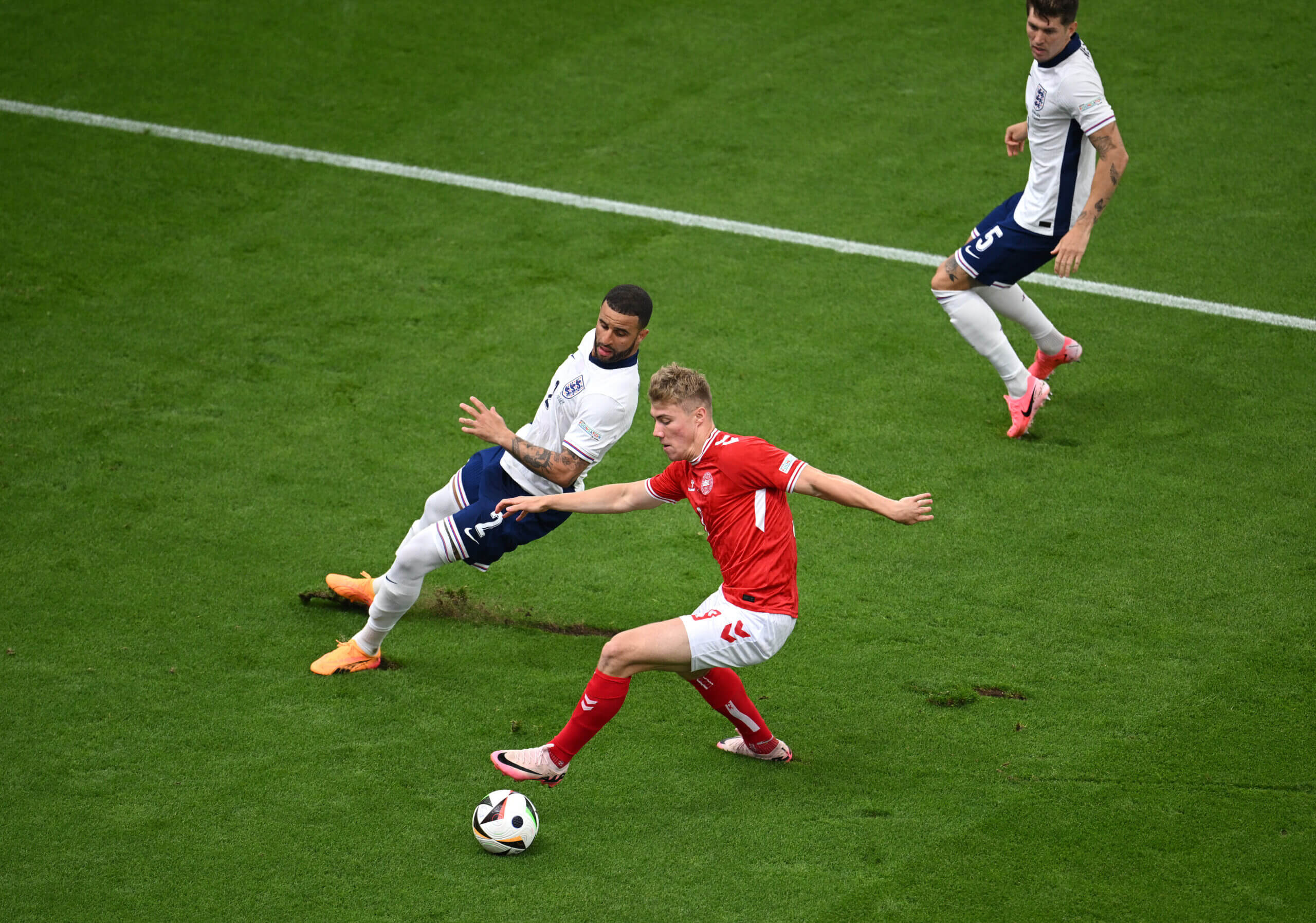
(Matthias Hangst/Getty Images)
This is also not the first turf-related problem in this tournament, with the pitch at the Merkur-Spiel Arena in Düsseldorf having to be resurfaced twice, then dug up and dismantled a third time after UEFA inspected and declared it still unsatisfactory.
Although the state of the pitch – last resurfaced in November – is a detrimental reflection on the host venue, more worryingly, it poses a risk to players, who could easily roll an ankle or injure themselves much more seriously because there is little risk. no support underfoot.
Considering the state of the pitch and the potential danger for both teams, they managed to navigate it while creating good passing sequences and threatening attacks.
And Sheldon
England’s lack of intensity
Due to the nature of international football, it is widely accepted that teams will rarely play with the same intensity out of possession as at club level. There is simply less time to work on triggers when there is so little training time available, so team form and a structured defensive block are largely preferred – although countries like Austria have defied this logic.
For England, their lack of intensity out of possession was particularly shocking. Whether it was fatigue, heat or a lack of confidence, there were very few moments where Southgate’s side closed the field and put Denmark under real pressure in their build-up, allowing them on the contrary to progress easily towards the middle third.
An examination of the figures underlines this even more. England’s 28 passes allowed per defensive action (PPDA) – used as an indicator of pressing intensity – were the least intense when aggregating their Euro 2020, 2022 World Cup and of Euro 2024.
There will be plenty of analysis in the days to come, but England’s defensive approach would be a good place to start.
Marc Carey
Where does this leave England?
England’s 1-1 draw with Denmark ensured at least a third place finish with four points from two games. Denmark are third, two points behind England and tied with Slovenia. Serbia equalized late against Slovenia in Thursday’s kick-off to secure their first point and leave Slovenia second with two points from two games.
Group C
| Team | Plays | Points |
|---|---|---|
|
England |
2 |
4 |
|
Slovenia |
2 |
2 |
|
Denmark |
2 |
2 |
|
Serbia |
2 |
1 |
Southgate’s side need a draw against Slovenia in their final match on June 25 to secure a place in the last 16. Denmark will face Serbia at the same time.
The group winners will face a third-placed team here in Gelsenkirchen on June 30, while the runners-up will face the winner of Group A the day before in Dortmund, who, as things stand, will be Germany.
What future for England?
Tuesday June 25: Slovenia, Cologne, 8 p.m. UK, 3 p.m. ET
What future for Denmark?
Tuesday June 25: Serbia, Munich, 8 p.m. UK, 3 p.m. ET
Recommended reading
(Top photo: Stu Forster/Getty Images)
